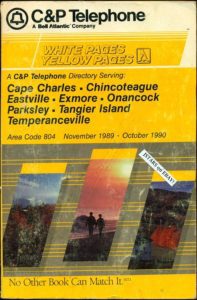 Download Our Free White Paper
Download Our Free White Paper
Imagine your city without a daily paper. Newspaper publishers, editors, managers and owners are worrying, not only about having to lay off staff, but who will cover the community in a meaningful way.
In Economics 101, it’s the classic “free rider” problem. Who will attend planning meetings and the statehouse? Who will investigate police and crime? Will news only get covered when there is an outburst, and it somehow gets posted by some unwashed blogger? Let’s call it the era of “Don’t Taze Me Bro” journalism.
But it does not have to be that way. There is a role for your the local paper, because in some cases, these local franchises have been the leading local brands in their markets.
That being said, there is a problem for newspapers. The incredible 30 percent margins, unbelievable power and unassailable position of your regional paper in past years have all made it hard for you to know what to do, and unable to act like the underdog. So far, your paper has redesigned pages, shortened articles, cut staff, eliminated bureaus, reduced paper size and redesigned your website now about, oh, 10 times. What the industry has done is put the newspaper in a severely reduced competitive position at a time when you need your scale and power more than ever.
Newspapers are the point where radio was after the advent of television. For years after television arrived, radio networks ran Hoover-era schedules of soap operas, dramas and westerns, even as television encroached on its audience. Radio’s audience declined. But one day, clever station managers realized that if radio was to survive, new leadership would have to remake it completely. Somewhere in the 1950s, the proper mix of news, d.j.s, traffic, weather, music and talk radio was invented, and the great radio stations survived. Rock music arrived. FM took off. And radio’s KDKA, WABC, KYW and the like thrived again.
The Greatest Regional Brands
Like the great radio stations, newspapers are important regional brands that need not go the way of the regional department store. The regional newspaper brand names mean something to the community. They evoke a region like no other. Use that legacy.
The Hartford-Courant. The Virginian-Pilot. The Richmond Times-Dispatch. The Los Angeles Times. Louisville Courier-Journal. Newark Star-Ledger. The Baltimore Sun. The Miami Herald. The New York Post.
These franchises have legs, and the public trusts them, even though they curse the editorials. Use that legacy and history. People like the idea of reading a newspaper. Do not let your brand go the way of the regional department store. Unless you act, The New York Times will do to regional daily papers what Macy’s did to Burdine’s, Marshall Field and the rest.
Pronounced Dead Many Times
The newspaper has been pronounced dead many times, as have other media. A timeline:
• 1910: Recorded music will kill the orchestra.
• 1930: Radio will kill the newspaper, and the music industry.
• 1950: Television will kill the newspaper, and movies.
• 1982: Cable will kill the newspaper and the network news.
• 1995: The Internet will kill the newspaper and the music industry.
• 2002: The Internet will save the newspaper and kill the movie industry.
• 2009: Kindle kills the newspaper, and bloggers instead scoop the greatest story of all time, the Second Coming!
Let’s get serious. Newspapers can reinvent their century old brands.
What to do?
First, believe that there are solutions. The important point is not to give the pessimism an inch. Instead, realize that there is a changed environment, and you need to establish a process for coming up with, and implementing, ideas. New ideas. And you have to completely commit to killing sacred cows. Your staff might be smaller, and have to work differently. Radio killed off Dark Shadows. CBS took the risk of moving Edward R. Murrow from radio to television.
BrandlandUSA.com put together a FREE 10-page PDF report called 20 Ways to Re-Invent the Local Paper. A link is below and here 20 Ways to Save Your Newspaper. The sheet includes the following ideas, each with descriptions.
To start, we suggest that newspapers:
- Change the percent of R.O.P. advertising vs. insert advertising
- Greatly upgrade the status of carriers
- Selectively use bureaus for promotional purposes
- Make the newspaper unique, even at higher cost
- Drop online partners that don’t help you
- Force the web staff and print staff to compete
- Cut back on zoned editions
- Stress the local brand, not wire copy
- Ditch ombudsmen
- Move sports reporters to city desk
- Go on old-style crusades
- Emphasize news side balance
- Re-hire retired staffers part-time
- Make the design stodgy
- Decrease photo size
- Reorganize classifieds
- Make weddings and obits free
- Change minority recruiting practices
- Don’t rest on old ad rates
- Bring humor back into the paper
Want to find out more? Download a free PDF copy of the document here at BrandlandUSA’s 20 Ways to Save Your Newspaper.






TIME Magazine article:
Saving Newspapers
Newspapers should stop devoting resources to cover news conferences on the national level, instead get the wire, the people who call news conferences will never answer any real questions anyway so it’s useless to send a reporter to take notes on a prepared statement. Use that reporter to write an in-depth story that explains the situation in detail. Have the reporter do investigative research, research WILL be necessary!
The entire model has to change. Readers already know what the “news” is, they hear about it or read it online well before the print edition comes out. That means the print edition offers stale “news” that we already heard. What we need is a comprehensive and detailed analysis that can’t be offered by online sites and radio news summaries. The routine stuff like Obama says “x” should be printed from a wire service or a pool of reporters. No way should a reporter from every paper be sent to take dictation.
Local is important, but again, it has to be investigative or in-depth. No more blurbs or summaries, those are already available for free and if newspapers want to publish that, then just get it from a wire service, there’s no need to assign a writer to summarize what we already know.
Stop the obvious biased slant. In other industries, the customer is always right. It doesn’t matter if you think you’re biased or not, if the reader thinks so then you have to change. The readers’ opinion is all that matters so it’s time to change the writing/writers until the readers feel the paper is no longer biased. Many say the biases are cultural and ingrained within the newroom. If so, then perhaps the entire staff has to be fired and replaced over time. Because we all tend to hire people who are similar to ourselves or who we can identify with, this may not be possible without firing all the staff at one time and starting over. Yikes.
We will have to rely upon the weeklies, not the dailies.
Nice post with lots of interesting ideas. I can see how the proposal to get rid of zoned editions has led to calls to have you tarred & feathered – after all, the general understanding is that people want their local news.
However: The fact is, those zoned editions haven’t worked. Advertising won’t cover the costs and readers essentially ignore them. The problem is that medium- to large-sized papers are terrible at covering small areas or neighborhoods.
Compare the coverage in any truly local independent newspaper and in the large daily’s attempts – you’ll see why local readers by and large are loyal to their weekly newspapers and disdainful of their bigger daily’s attempts to compete.
So, to heck with it. Stop wasting your readers’ time and your advertisers’ money. Buy a small paper if you want to cover small communities – it’ll keep the economies of scale you need – and use the bigger daily to cover bigger stories. That’s what it’s there for.